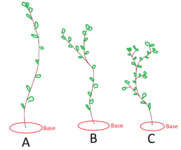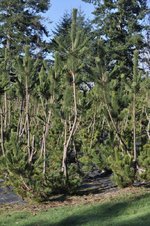eeeealmo
Mame
Succinctly put, when trying to thicken a trunk or a branch, does ramification on the branch help or hinder the thickening? Should ramification be removed while one shoot is allowed to elongate, or should everything be allowed to grow free, even if it results in ramification?
I ask this because Bjorn alluded scenario A (below) resulting in the most thickening of the trunk/base and was unsure why that was the case. Thanks!
p.s. Sorry for poor drawing quality. Drawing with a mouse is awful.

I ask this because Bjorn alluded scenario A (below) resulting in the most thickening of the trunk/base and was unsure why that was the case. Thanks!
p.s. Sorry for poor drawing quality. Drawing with a mouse is awful.



